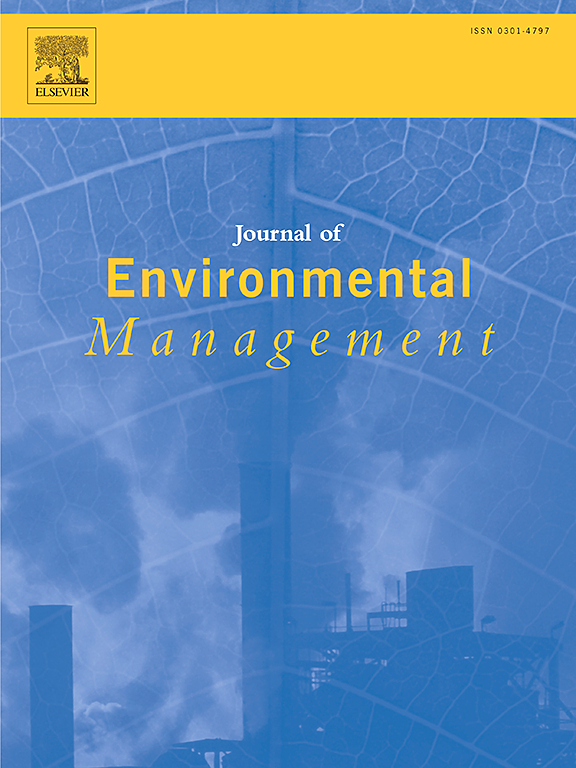Effects of decabromodiphenyl ethane (DBDPE) exposure on soil microbial community: Nitrogen cycle, microbial defense and repair and antibiotic resistance genes transfer
IF 8
2区 环境科学与生态学
Q1 ENVIRONMENTAL SCIENCES
引用次数: 0
Abstract
DBDPE, a widely used brominated flame retardant, is frequently detected in soil. However, the toxic effects of DBDPE on soil microbial communities remain unclear. This study investigated the effects of DBDPE on the microbial community shifts, the nitrogen cycle, microbial defense and repair, and antibiotic resistance genes (ARGs) transfer. After 28 days of DBDPE exposure, the soil microbial community was altered. Denitrifier were enriched by 4.07–78.22% under DBDPE exposure concentrations of 100–1000 ng/g. Additionally, the abundances of genes encoding enzymes involved in nitrification and denitrification processes were up-regulated at 100 ng/g DBDPE exposure, and further promoted at 1000 ng/g DBDPE exposure. Meanwhile, DBDPE exposure at concentrations of 100–1000 ng/g stimulated the production of extracellular polymers substances (EPS) (2155–2347 mg/kg), increased the accumulation of reactive oxygen species (ROS) (by 97.95–108.38%), and activated the antioxidant defense system of soil microorganisms, which correspondingly down-regulated catalase (CAT) genes (by 4.65–4.91%), while up-regulated superoxide dismutase (SOD) (by 0.52–2.63%) and glutathione (GSH) genes (by 19.03%–44.61%). Genes related to the tricarboxylic acid (TCA) cycle, glycerophospholipid metabolism, and peptidoglycan biosynthesis were up-regulated, enhancing cell membrane repair in response to DBDPE exposure. Moreover, the increase in DBDPE concentration selectively enriched and promoted the transmission of ARGs. The co-occurrence network of ARGs and mobile genetic elements (MGEs) revealed that DBDPE facilitated the horizontal gene transfer (HGT)-mediated transmission of transposase, ist, and insertion sequence-associated ARGs.

十溴二苯乙烷(DBDPE)暴露对土壤微生物群落的影响:氮循环、微生物防御与修复和抗生素抗性基因转移
DBDPE是一种广泛使用的溴化阻燃剂,在土壤中经常被检测到。然而,DBDPE对土壤微生物群落的毒性作用尚不清楚。本研究探讨了DBDPE对微生物群落迁移、氮循环、微生物防御与修复以及抗生素耐药基因(ARGs)转移的影响。DBDPE暴露28 d后,土壤微生物群落发生改变。DBDPE暴露浓度为100 ~ 1000 ng/g时,反硝化菌富集4.07 ~ 78.22%。此外,参与硝化和反硝化过程的基因编码酶的丰度在100 ng/g DBDPE暴露下上调,并在1000 ng/g DBDPE暴露下进一步提高。同时,浓度为100 ~ 1000 ng/g的DBDPE刺激了胞外聚合物物质(EPS)的生成(2155 ~ 2347 mg/kg),增加了活性氧(ROS)的积累(97.95 ~ 108.38%),激活了土壤微生物的抗氧化防御系统,导致过氧化氢酶(CAT)基因下调(4.65 ~ 4.91%),超氧化物歧化酶(SOD)基因上调(0.52 ~ 2.63%),谷胱甘肽(GSH)基因上调(19.03% ~ 44.61%)。与三羧酸(TCA)循环、甘油磷脂代谢和肽聚糖生物合成相关的基因被上调,增强了DBDPE暴露下的细胞膜修复。此外,DBDPE浓度的增加选择性地富集和促进了ARGs的传播。ARGs和移动遗传元件(MGEs)的共现网络表明,DBDPE促进了转座酶、ist和插入序列相关ARGs的水平基因转移(HGT)介导的传播。
本文章由计算机程序翻译,如有差异,请以英文原文为准。
求助全文
约1分钟内获得全文
求助全文
来源期刊

Journal of Environmental Management
环境科学-环境科学
CiteScore
13.70
自引率
5.70%
发文量
2477
审稿时长
84 days
期刊介绍:
The Journal of Environmental Management is a journal for the publication of peer reviewed, original research for all aspects of management and the managed use of the environment, both natural and man-made.Critical review articles are also welcome; submission of these is strongly encouraged.
 求助内容:
求助内容: 应助结果提醒方式:
应助结果提醒方式:


